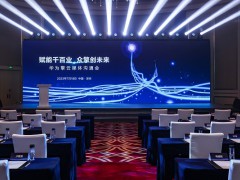據鉆井地帶網站2023年6月12日報道,據全球權威評級機構最近發表的一份報告稱,由于企業執行凈零排放目標計劃,碳捕獲與封存(CCS)和二氧化碳去除(CDR)技術將“在未來脫碳方面發揮關鍵作用”。
該公司在其可持續發展研究團隊撰寫的一份報告中表示,在25家收入最高的石油和天然氣公司的樣本中,所有公司都計劃使用CCS、CDR或碳信用中的至少一種來實現其脫碳目標。
碳捕獲與封存
CCS是一組將二氧化碳從其他氣體中分離出來,然后將其捕獲并儲存在永久設施中的技術,正如報告中所定義的那樣, 這種技術可用于發電和工業,直接從生產過程中捕獲二氧化碳,并通過管道將二氧化碳輸送到長期的地質儲存地點。捕獲和儲存的碳也可以用于能源部門,例如在枯竭的儲油層中開采石油和天然氣。另一個用途是通過捕獲蒸汽甲烷重整和水氣轉換反應產生的二氧化碳來生產藍色氫氣。
報告稱,基于CCS的解決方案被認為比基于自然的解決方案(NbS)“具有更強的永久性特征”,因為只要“管理得當”,它們就不太容易受到二氧化碳意外釋放的影響。然而,報告稱,與重新造林等解決方案相比,CCS在技術準備方面普遍落后。報告稱,儲存也是決定脫碳的一個主要因素,因為CCS有足夠的儲存能力來處理“幾十年的排放”。
報告稱,在樣本公司中,去年的CCS產能占其范圍1和范圍2排放量的7%,其中大部分活動來自美國和歐洲的石油和天然氣巨頭。CCS和碳捕獲、利用和封存(CCUS)的部署計劃將使產能從目前的5000萬噸增加到2030年的3.25億噸,其中包括提高石油采收率的目標和捕獲其他公司排放的解決方案。
在樣本公司中,只有60%的公司透露了他們的預期未來產能,只有56%的公司確定了所需的具體投資成本,而24%的公司表示他們將利用捕獲的二氧化碳來提高石油采收率,但報告稱,“這些目標往往以模糊的方式表達”。
根據世界經濟論壇所言,范圍1排放是公司通過運營其擁有或控制的產品而產生的直接排放,而范圍2排放是由公司購買的能源生產產生的間接排放。
二氧化碳去除
如報告中所定義的那樣,CDR是一組基于自然和技術的解決方案,可以從大氣中去除二氧化碳,并將其永久儲存在陸地、地質或海洋中。CDR的例子包括在造林和再造林過程中植樹,以及改善土壤質量。報告指出,CDR技術通常不會直接減少排放。
在報告樣本中,92%的石油和天然氣公司計劃主要通過基于自然的解決方案來使用CDR,但“很大一部分公司的披露缺乏細節”。報告中的公司專注于植樹造林和再造林的解決方案。
報告稱,技術上的CDR解決方案,如直接空氣碳捕獲和儲存(從環境空氣中去除和儲存碳),尚處于較早的發展階段,“技術和經濟挑戰仍有待克服”。
廣泛的估計范圍
報告中所有脫碳解決方案的生命周期成本估計范圍很廣,顯示了“技術準備狀況、具體應用和所涉及的不確定性”。此外,報告說,CCS和CDR可能會產生其他環境后果,比如增加生態系統的用水需求。
報告稱:“概括而言,大型石油和天然氣公司正在探索不同的碳捕獲商業模式,其中可能包括隔離其他企業活動產生的排放,而不一定是捕獲自己的排放。”此外,標準普爾全球評級公司表示,對大公司來說,CCS投資是“謹慎且負擔得起的”,但“不具有變革性”。
李峻 編譯自 鉆井地帶網站
原文如下:
Carbon Capture, CO2 Removal to Play Key Decarbonization Role
Carbon capture and storage (CCS) and carbon dioxide removal (CDR) will “play a key role in decarbonization” as companies execute plans on their net-zero emission targets, according to a recent report by the top Rating Agency.
In a sample of 25 of the highest-revenue oil and gas companies, all of them plan to use at least one among the options of CCS, CDR, or carbon credits to meet their decarbonization goals, the rating firm said in a report authored by its Sustainability Research team.
Carbon Capture and Storage
CCS is a group of technologies that separate carbon dioxide from other gases, then capture and store it in a permanent facility, as defined in the report. The technology can be deployed in power generation and industry to capture carbon dioxide directly from processes and transport the gas in pipelines to long-term geological storage sites. The captured and stored carbon can also be used in the energy sector, such as for extracting oil and gas in depleted reservoirs. Another use would be the production of blue hydrogen by capturing the carbon dioxide formed by steam methane reforming and a water-gas shift reaction, it said.
The report said that CCS-based solutions are seen as “having stronger permanence characteristics” than nature-based solutions (NbS) as they are considered less vulnerable to the accidental release of carbon dioxide, provided they are “well managed.” However, CCS is generally behind in technological readiness compared to solutions such as reforestation, the report said. Storage is a major factor in decarbonization decisions as well, as there is enough storage capacity for CCS to handle “decades of emissions”, the report said.
Of the companies in the sample, CCS capacity in 2022 represented seven percent of their scopes 1 and 2 emissions, with most activity coming from oil and gas majors in the USA and Europe, the report said. Plans for the deployment of CCS and carbon capture, utilization, and storage (CCUS) would see capacity rise from 50 million tons currently to 325 million tons by 2030, which include targets for enhanced oil recovery and solutions to capture emissions from other companies. Of the firms in the sample, only 60 percent revealed their expected future capacity and only 56 percent identified the specific investment costs required, while 24 percent said they would use the captured carbon for enhanced oil recovery, but “often these aims are expressed in vague terms”, the report said.
According to the World Economic Forum, scope 1 emissions are direct emissions that a company causes by operating the things that it owns or controls, while scope 2 emissions are indirect emissions created by the production of the energy that an organization buys.
Carbon Dioxide Removal
CDR is a group of both nature-based and technological solutions that remove carbon dioxide from the atmosphere and permanently store it in terrestrial, geological, or ocean reservoirs, as defined in the report. Examples of CDR include planting trees in the process of afforestation and reforestation, as well as improving soil quality. CDR technologies often do not directly reduce emissions, the report noted.
In the report sample, 92 percent of the oil and gas firms plan to use CDR mainly through nature-based solutions, but a “high proportion of companies’ disclosure lacks details”. The companies in the report focused on afforestation and reforestation solutions.
Technological CDR solutions such as direct air carbon capture and storage, which removes and stores carbon from ambient air, are at much earlier stages of development, with “technical and economic challenges still to be overcome”, the report said.
Wide Range of Estimates
The life-cycle costs of all the decarbonization solutions in the report have a wide range of estimates, showing the “state of technological readiness, the specific application, and the uncertainty involved”. In addition, CCS and CDR could have other environmental consequences such as increasing water demand in ecosystems, the report said.
“In general, large oil and gas companies are exploring different business models for carbon capture, which may include sequestering emissions from other companies’ activities, not necessarily capturing their own emissions”, the report said. Further, the rating agency said that CCS investments are “prudent and affordable” for large companies but “not transformational”.
免責聲明:本網轉載自其它媒體的文章及圖片,目的在于弘揚石化精神,傳遞更多石化信息,宣傳國家石化產業政策,展示國家石化產業形象,參與國際石化產業輿論競爭,提高國際石化產業話語權,并不代表本網贊同其觀點和對其真實性負責,在此我們謹向原作者和原媒體致以崇高敬意。如果您認為本站文章及圖片侵犯了您的版權,請與我們聯系,我們將第一時間刪除。







